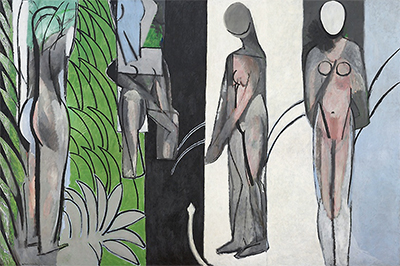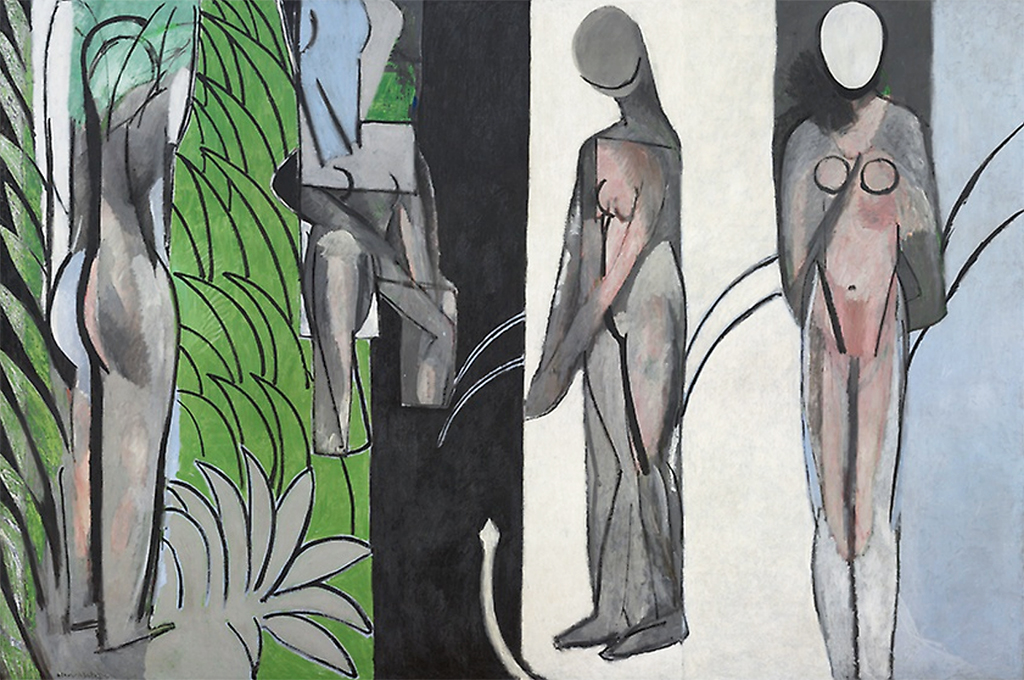Bathers have been used as inspiration throughout French art for many centuries, and Matisse would use this theme in a variety of ways across his long career. This huge mural was eventually completed in 1917, after a re-work and a pause of several years.
Henri Matisse took on a large number of influences within his work in order to create his unique style of art. There can be no doubt as to the impact of African art here, such as with the way in which the shapes of the body are formed with a type of primitive and abstract look. One can see much the same in several related artists of around this period and we also know that several notable European painters would also collect antiquities from the region, including masks and sculptures. Historic african art has clear similarities with abstract art, particularly in the figurative genre, where minimal lines are used in order to create these almost ghostly characters.
The Cubist movement would take influence from African art and Bathers by a River came about at a time when Matisse was starting to make use of this style for the first time. His break between working on this painting allowed him to be able to then impart his development over the period into this work, through considerable amendments. Perhaps as it was turned down for purchase originally, he decided to leave it at the time, before then choosing to return to it as his outlook altered. He would never stand still as an artist, it was simply not in his nature. The lack of facial features feels eery, and is another nod to both Cubism and African art styles. The artist makes use of fairly thick black lines to produce all forms in this piece, including the vegetation on the left hand side, which is essentially just blocks of green and grey, with curved lines then placed over the top.
This painting can be found in all its glory at the Chicago Art Institute in the US. Smaller galleries would simply be unable to display this large mural, which stands at nearly four metres wide, and just over two and a half metres tall. Size-wise, it can be compared with many of the Rothko colour field paintings, though those tended to be in portrait form, rather than landscape. Rothko deliberately made them that big in order to immerse the viewer into the artwork, with its dimensions being larger than the person in front of it. Examples of this can be found in Untitled (1952) and Orange and Yellow. In the case of Matisse, he had actually been commissioned by collector Sergei Shchukin to produce items in this larger size, though he later decided against purchasing this piece, opting instead for Dance and Music.





